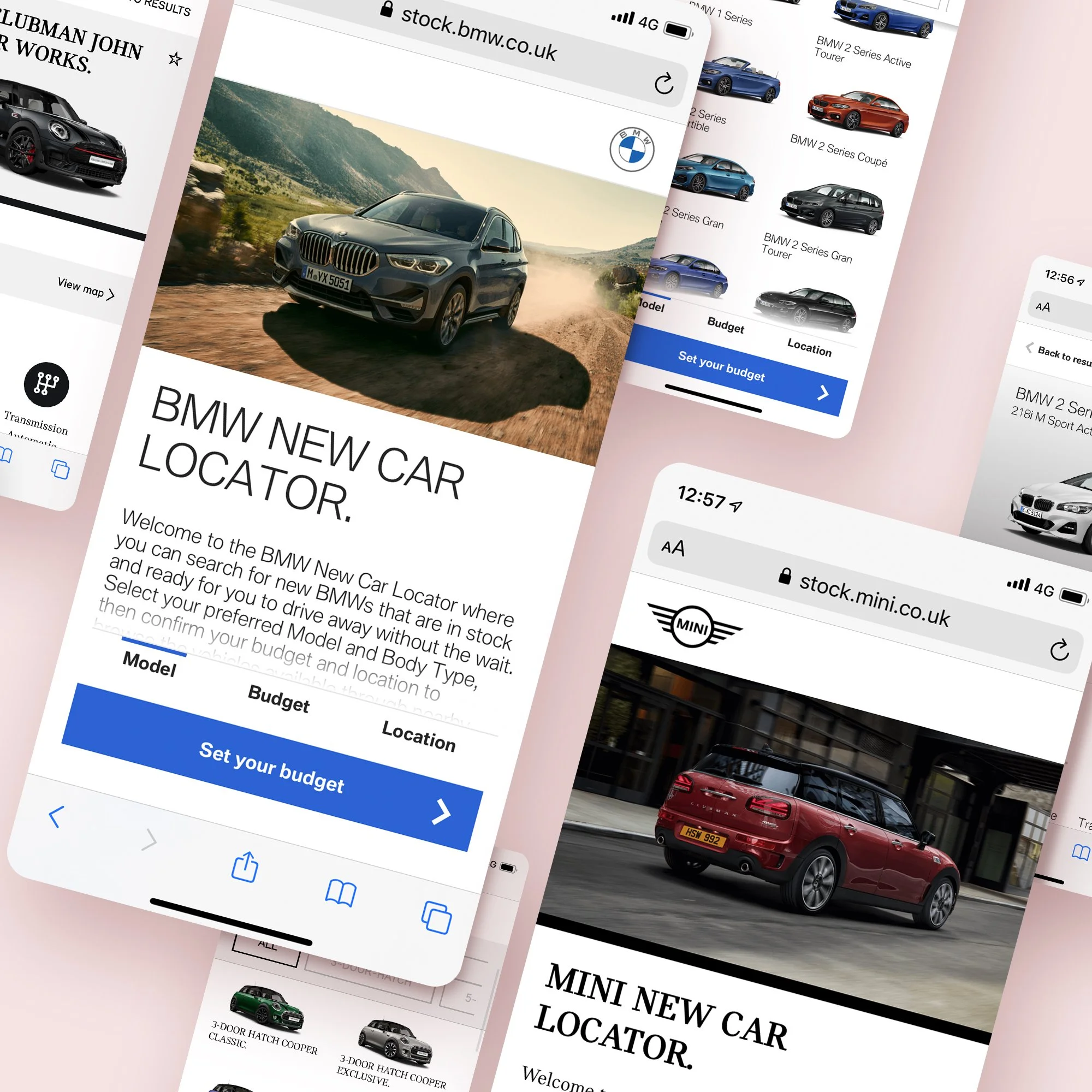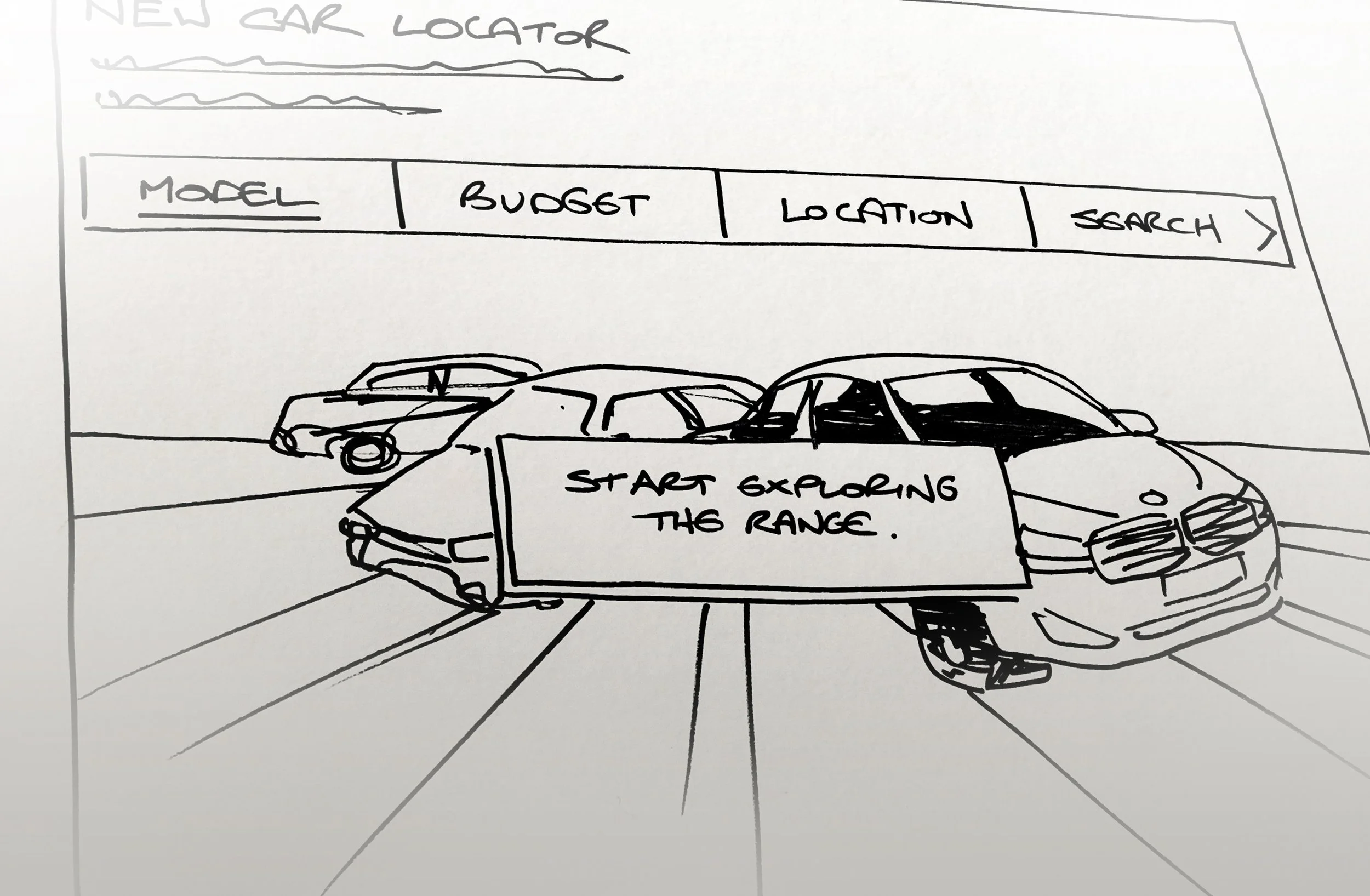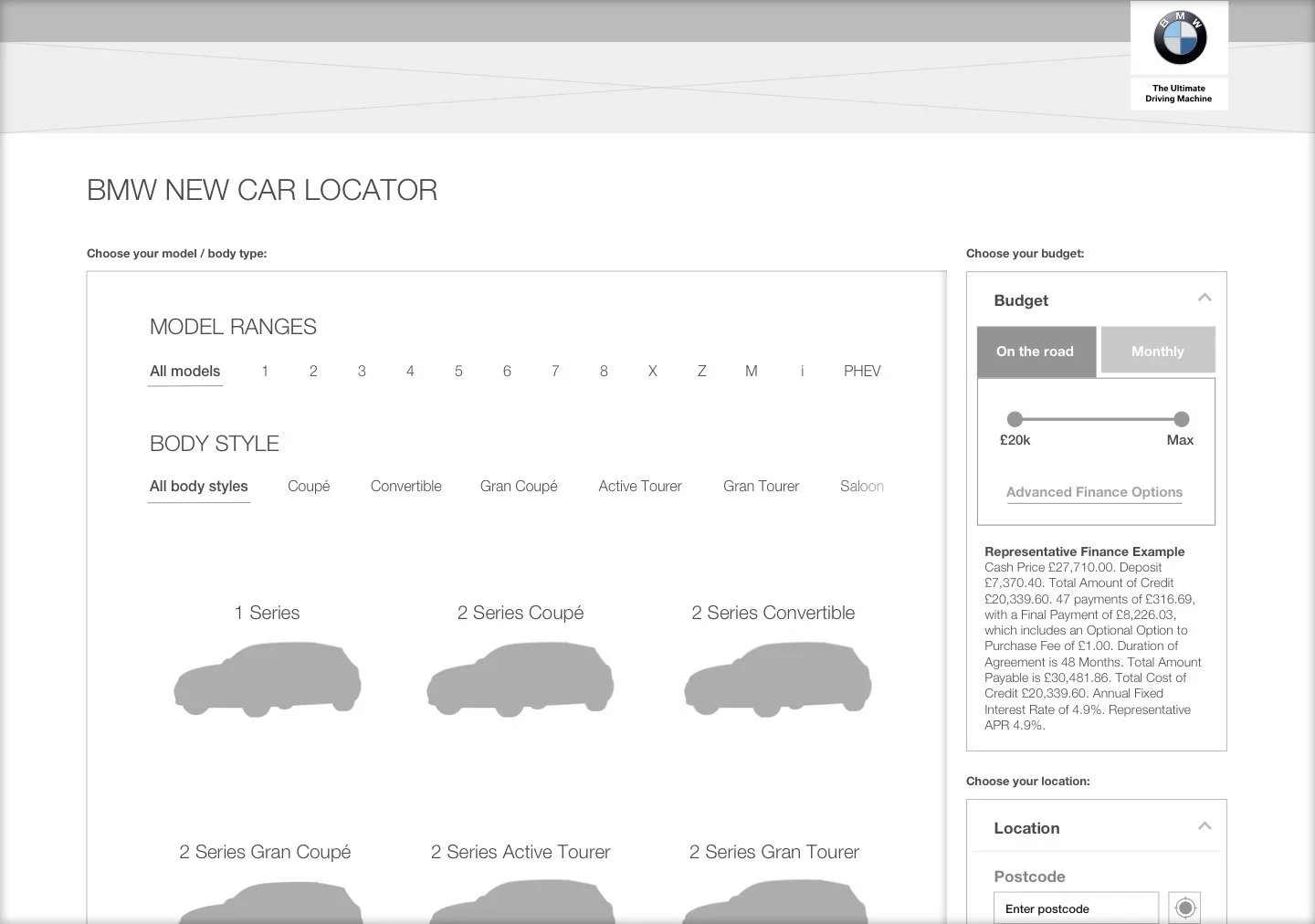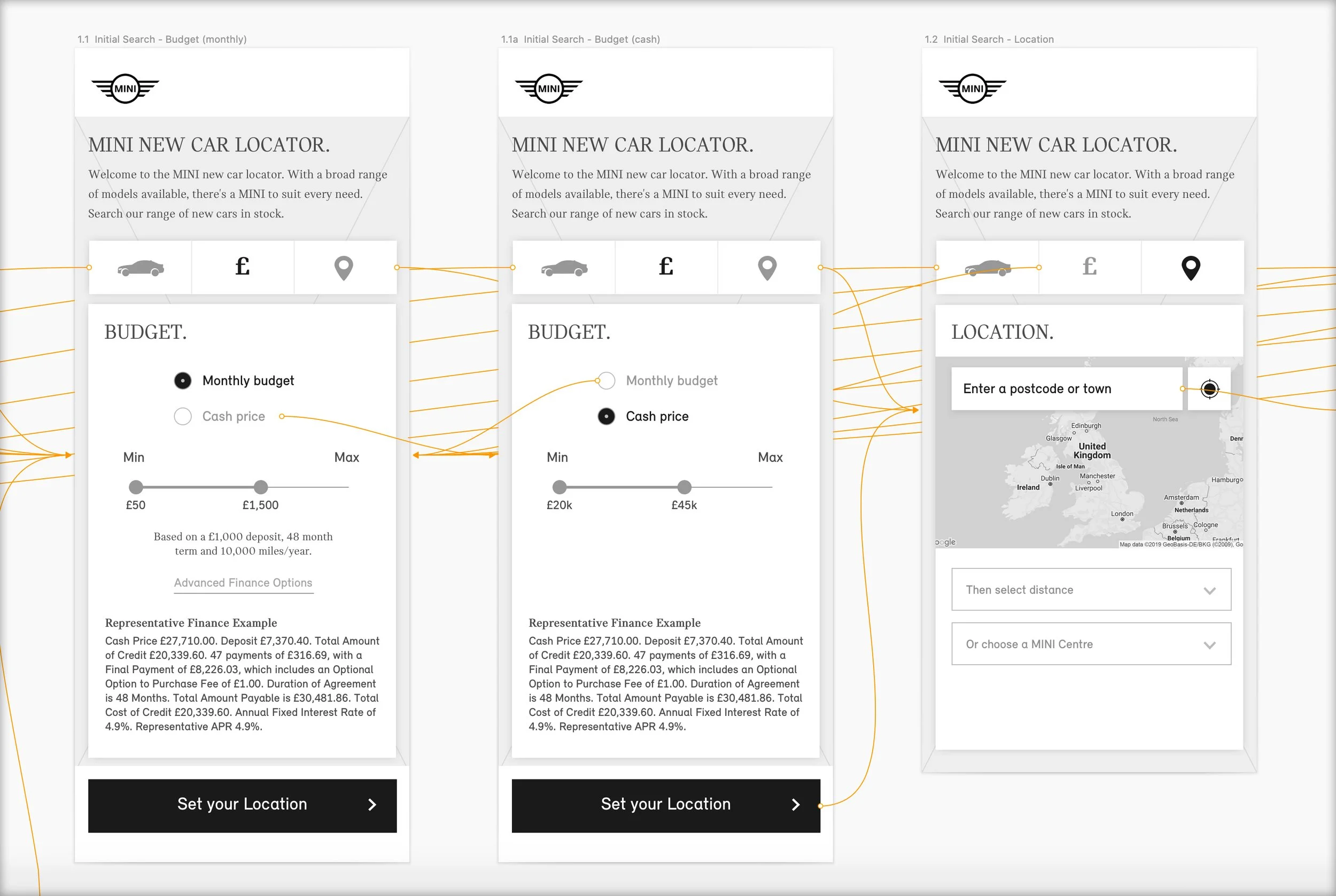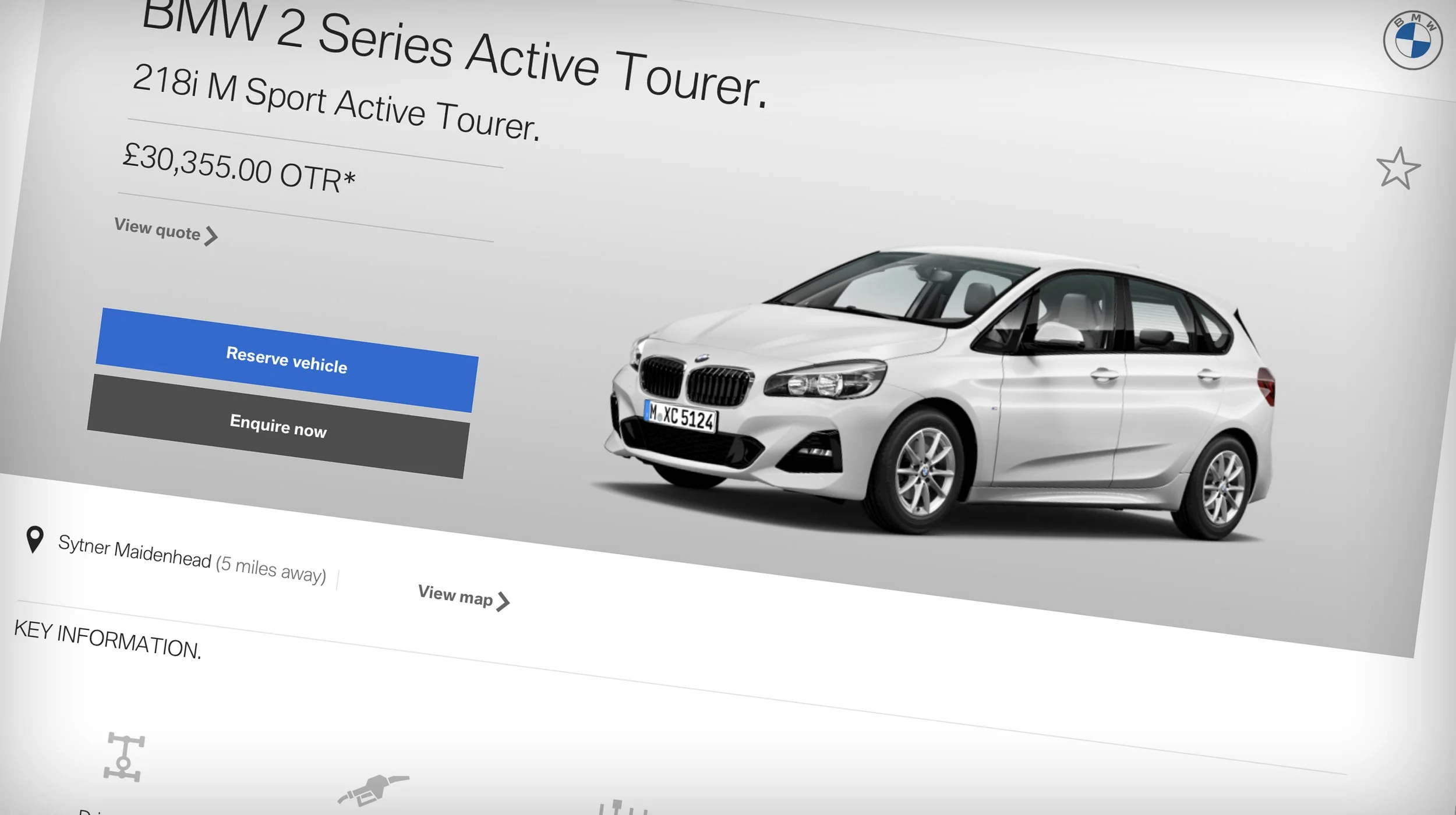BMW
Help users get their fast cars. Faster.
OVERVIEW
BMW sought to create a New Car Locator to enhance the car-buying experience, offering potential customers a faster and more tailored route to ownership.
Traditionally, ordering a custom-spec vehicle required a long wait, while selecting from local dealer inventory often involved compromises.
The goal was to provide a searchable and filterable database of available stock across BMW’s dealer network, enabling customers to find their ideal vehicle quickly through an intuitive interface.
To ensure success, the project required a deep understanding of user expectations and business needs.
I had my team focus on creating a seamless and engaging user experience that simplified the search and purchase process while maintaining the high standards expected of the BMW brand.
Challenges & Considerations
1. Balancing Information Transparency & Security
● Too much dealer data could pose security and business concerns.
● A balance had to be struck to ensure customers received useful insights.
2. Multiple Entry Points
● Users could access the product online or via in-store terminals at BMW dealerships.
3. Brand Adaptability
● The product needed to support both BMW and Mini, requiring a flexible design framework adaptable to different brand structures.
● Mini’s search included an additional tier of configuration, requiring unique navigation considerations. This extra tier allowed users to specify additional customisation options, such as trim-specific features and bespoke styling choices, making the search process more granular compared to BMW’s approach.
Additionally, user expectations differed based on where they accessed the locator. Online users sought a quick and efficient browsing experience, while dealership visitors expected a guided approach with additional sales support. Designing for both contexts required thoughtful UX considerations.
Process & Execution
1. Research & Wireframing
Initial Wireframes & Iterative Refinements:
● Conducted requirement-gathering sessions with BMW Group.
● Created initial wireframe sketches to outline user journeys and key functionalities.
● Mapped recognised requirements and pain points to wireframes for validation.
User Journey & Search Mechanic Refinements:
● Worked with stakeholders to refine the search mechanics.
● Presented a detailed search mechanic options document for decision-making.
● Adjustments were made iteratively based on BMW’s evolving requirements.
These refinements ensured the system met both business and user needs, eliminating unnecessary complexities while enhancing search accuracy and speed.
2. Testing & Feedback
Confidential Testing Constraints:
● Limited test pool (restricted to BMW employees and internal teams due to confidentiality).
● Conducted Maze tests using Sketch wireframes to gather usability insights, identifying key areas for improvement. The tests revealed that users preferred a more prominent filtering system for narrowing down search results and that a clearer visual hierarchy improved navigation efficiency. Additionally, minor UI tweaks, such as repositioning action buttons, led to noticeable improvements in task completion speed.
Key Findings & Adjustments:
● Improved dynamic filtering mechanics for better search functionality.
● Optimised UI elements, such as repositioning the close “X” icon for improved accessibility.
Despite the constraints, usability testing provided valuable insights that shaped the final product. The team prioritised real-world usability, ensuring that even minor UI elements contributed to an efficient and enjoyable experience.
3. UI Design & Final Implementation
Collaboration Between UX & UI Design:
● Worked closely with other more junior designers, ensuring UX best practices were integrated.
● Established a responsive design system for both desktop and mobile.
Final Outcome:
● A seamless and intuitive car locator tool that met BMW’s business objectives and provided an improved experience for users.
● The final design received positive feedback from both BMW and the internal team. A BMW representative noted that the tool 'streamlined the purchasing process significantly, enhancing both dealership efficiency and customer satisfaction.' This validation reinforced the impact of the project in improving the buying experience.
The final product was more than just a functional tool; it represented a shift in how customers could interact with BMW dealerships, reducing friction and enhancing engagement.
Key Takeaways
● Iterative design and close client collaboration led to a product that effectively addressed BMW’s needs.
● Data security vs. usability balance was a key challenge but successfully navigated.
● User testing, even with a limited pool, provided actionable insights that improved the final product.
The BMW New Car Locator transformed the car-buying experience, making it faster, more convenient, and highly user-centric compared to traditional methods that often required lengthy wait times for custom orders or limited selection from dealer stock.
Unlike competitors’ platforms, which sometimes lacked real-time inventory updates or user-friendly filtering, BMW’s solution provided a more seamless and efficient shopping experience, while maintaining BMW’s brand standards and operational constraints.
By leveraging intuitive UX design and a customer-first approach, BMW successfully bridged the gap between traditional car purchasing and digital innovation.
“Alex handled the project and all its complexities seamlessly, from concept to design to testing - he made things really straightforward.
There was a lot of debate around how best to implement the intricate search functionality, but he helped us to chart the most successful course forward and it’s proved an invaluable tool for BMW Group.”
— Matt Pryce, Project Manager, Juice.

